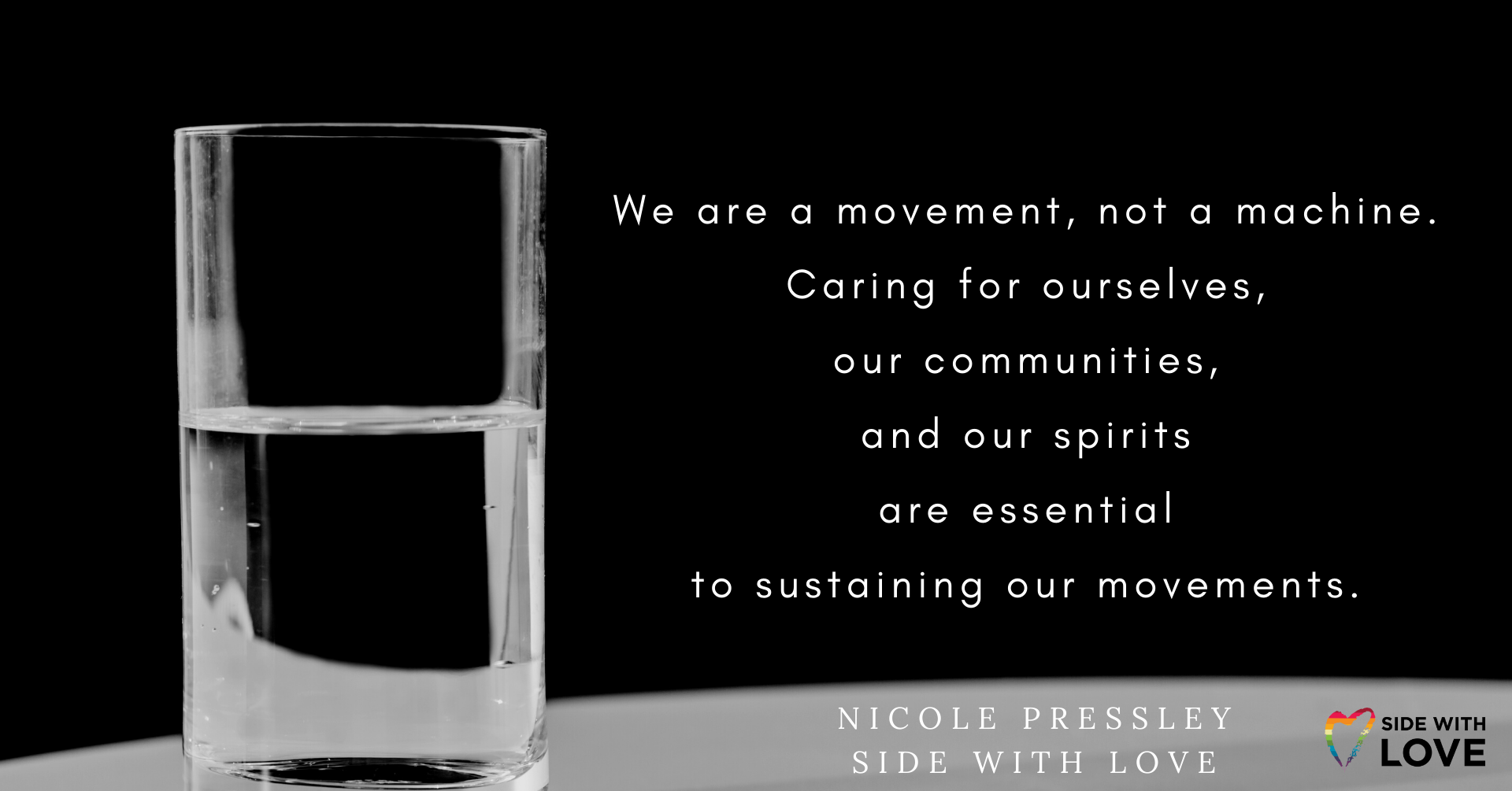From Individualism to Empathy
Can We Transform a Gruesome Milestone Into a Positive Turning Point?
By Jeff Milchen
As we approach the dismal milestone of one million people killed by COVID in the U.S., I’m reminded of words originally penned by German writer Kurt Tucholsky, “The death of one man: this is a catastrophe. Hundreds of thousands of deaths: that is a statistic!”
Our hearts simply cannot absorb the enormity of the loss of so many dead.
Statistics alone lack power to inspire the empathy, consideration, inclusion, and—above all—policy shifts we desperately need to protect our most vulnerable citizens. So how can we prevent such overwhelming numbers from demoralizing us and instead reach people in ways that inspire work to build the more equitable and compassionate system our Unitarian Universalist faith demands?
We’re at a crucial moment, as recent changes trend even further toward extreme individualism in lieu of compassion and community. In April, a federal judge declared the Center for Disease Control (CDC) lacked authority to control disease via mask mandates, so it’s now often a personal choice whether we protect ourselves and others around us. Whatever our personal risk comfort level may be, let’s set an example of defending vulnerable people who can’t ignore COVID’s deadly threat and advocate policies that defend them.
Media reports on the mask ruling focused overwhelmingly on airline passengers and industry personnel. Yet ridership on buses, trains, and subways exceeds air travel tenfold. And millions of people who might never board a plane rely on public transit to get to work, school, and obtain (or provide) essential goods and services.
While some mass transit systems employed federal relief funds through the CARES Act to install air filtration systems, an operable window is the best hope for many bus and subway commuters. Those passengers skew toward low-income, disabled, and people of color, and often have no alternative means for essential travel. They include many of the 7 million Americans who are immunocompromised at moderate to severe levels.
Many immunocompromised people go unrecognized by people around them because they don’t appear sick and choose increased risk rather than publicizing their vulnerability or secluding themselves. Yet their lives are endangered by COVID as protective measures are weakened.
Many immunocompromised people aren’t recognized as such by friends and acquaintances because they don’t appear sick and choose increased risk rather than seclusion. Yet their lives are at risk from COVID as protective measures are weakened.
About 13 percent of adult Americans are diabetic, but they comprise 30 to 40 percent of all COVID deaths. Numerous factors contribute to diabetes rates for Blacks, Latinos, and the poor greatly exceeding rates among white and non-poor individuals. And by almost any measure, health outcomes for people of color in the U.S. are worse than those for white people. Those disparities persist across socioeconomic status, education, and geography.
The COVID pandemic amplifies multiple existing inequities, from historic redlining that segregated people into neighborhoods that lack clean air and access to healthy food, to people in marginalized communities more often lacking health insurance and experiencing inferior treatment by health care professionals.
Suspending public safety precautions also will worsen existing inequities of race, health and wealth. The poorest U.S. counties suffered 4.5 times more deaths than the wealthiest during the worst COVID waves.
Many precautionary actions by governments and businesses early in the pandemic inspired a combination of hope and frustration among the immunocompromised. Masking requirements, physical barriers to protect workers, and opportunities for many more people to work from home all inspired hope that society might evolve to accommodate their disabilities.
At the same time, countless people who’d been denied the opportunity to compete for jobs based on their need to work remotely were frustrated by the sudden shift, as corporations recognized remote work is totally viable. As disability activist Imani Barbarin says, “now that a pandemic has forced nondisabled workers to isolate, accessibility is everywhere.” How can we ensure these gains for vulnerable people endure?
So can we use the milestone of one million deaths to drive positive change? If the current situation feels dispiriting, consider the progress won by folks with more visible physical disabilities in recent decades. Organizers steadily shifted public perception of disabilities from an individual problem into binding societal commitments that accommodate people of all abilities. That progress was rooted in cultural shifts advancing the first Unitarian Universalist principle: the inherent worth and dignity of every person.
Since immune system vulnerabilities are rarely visible, we all can help increase the awareness and empathy that must precede substantive change by speaking out to support measures defending and protecting the more vulnerable among us. As we advocate for immediate measures within our sphere of influence, like enabling remote work or participation in events, masking, and physical distancing, let’s also imagine the trail we need to blaze to health equity.
Just as investing in greater equity for folks with physical disabilities yields a bounty of benefits to everyone, designing for people with health vulnerabilities via reforms like improved building ventilation, paid sick days, and ultimately, universal health care, will improve the quality of life for all of us.
The Washington State Education Ombuds office compiled a fine collection of COVID-19 and Disability Justice Resources (pdf). Jeff Milchen is the UUA Justice Communications Associate and a Side With Love team member.



